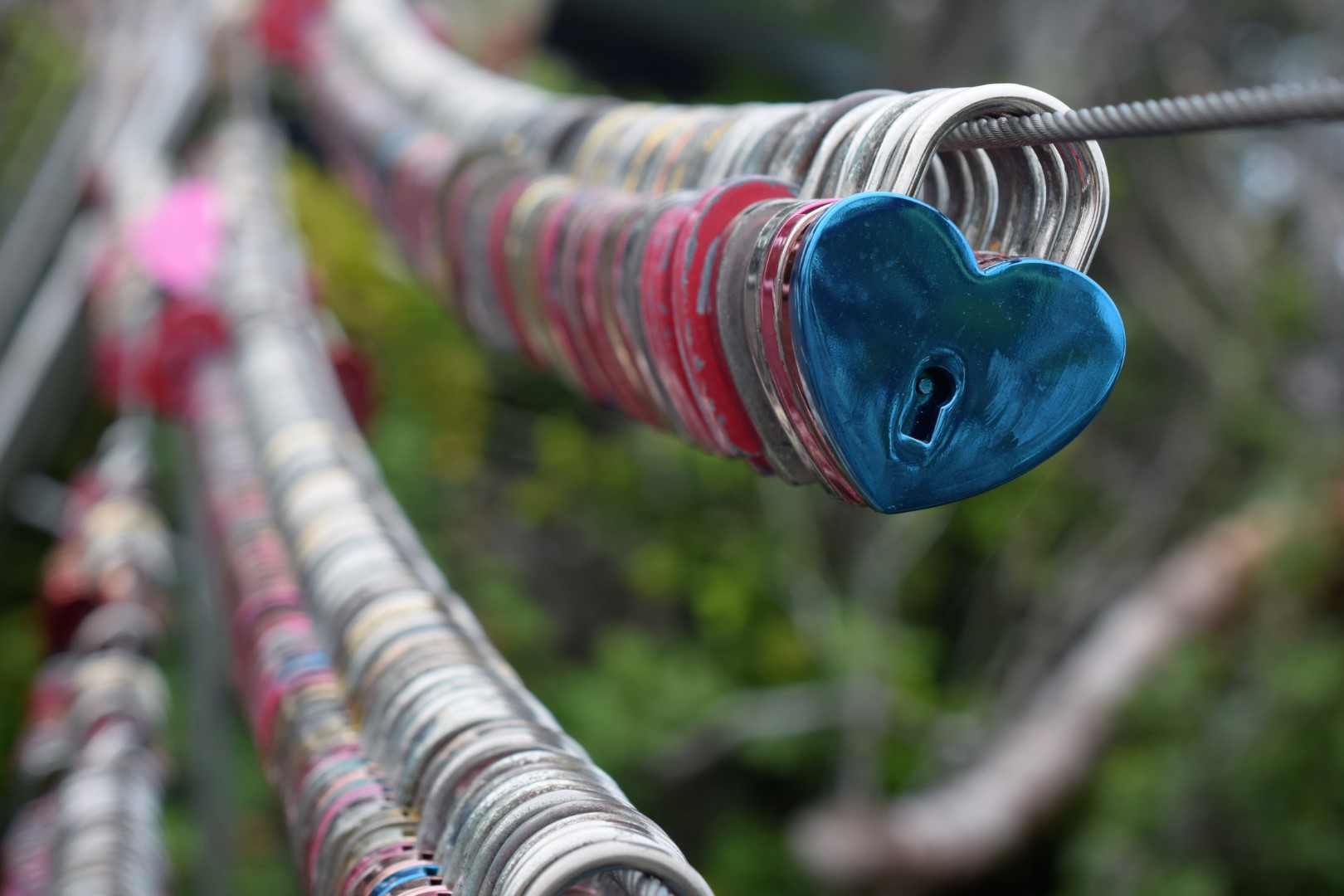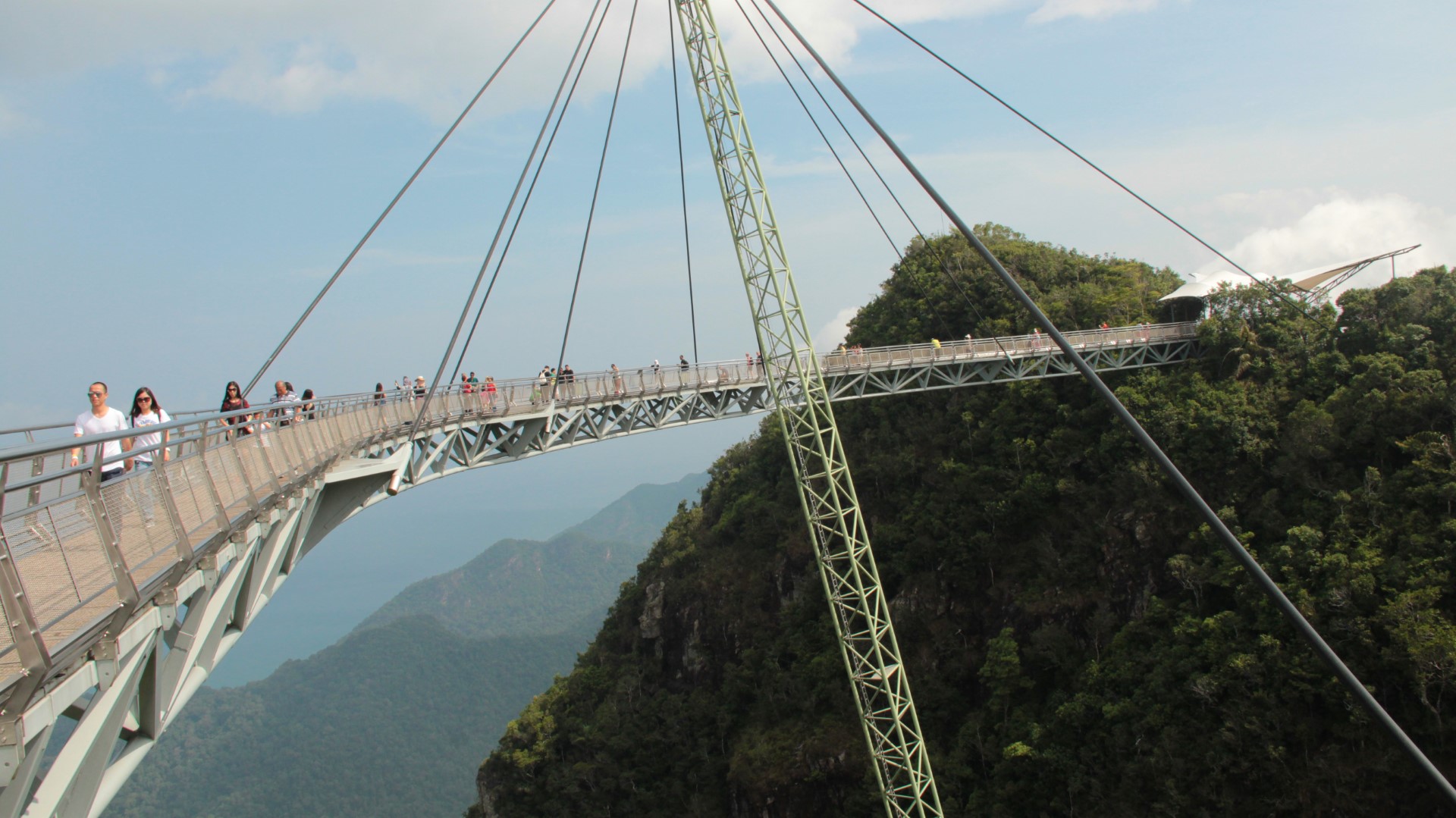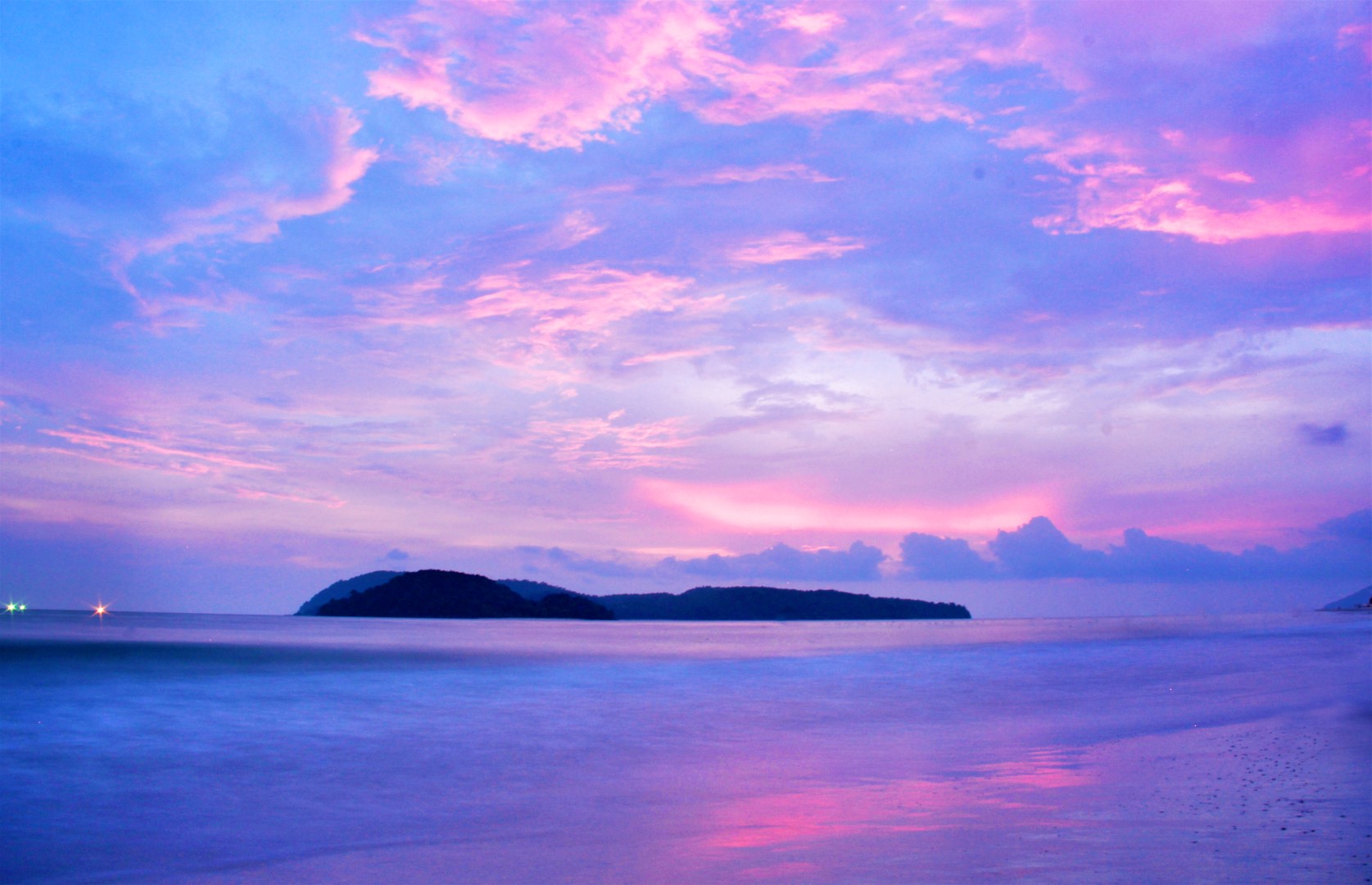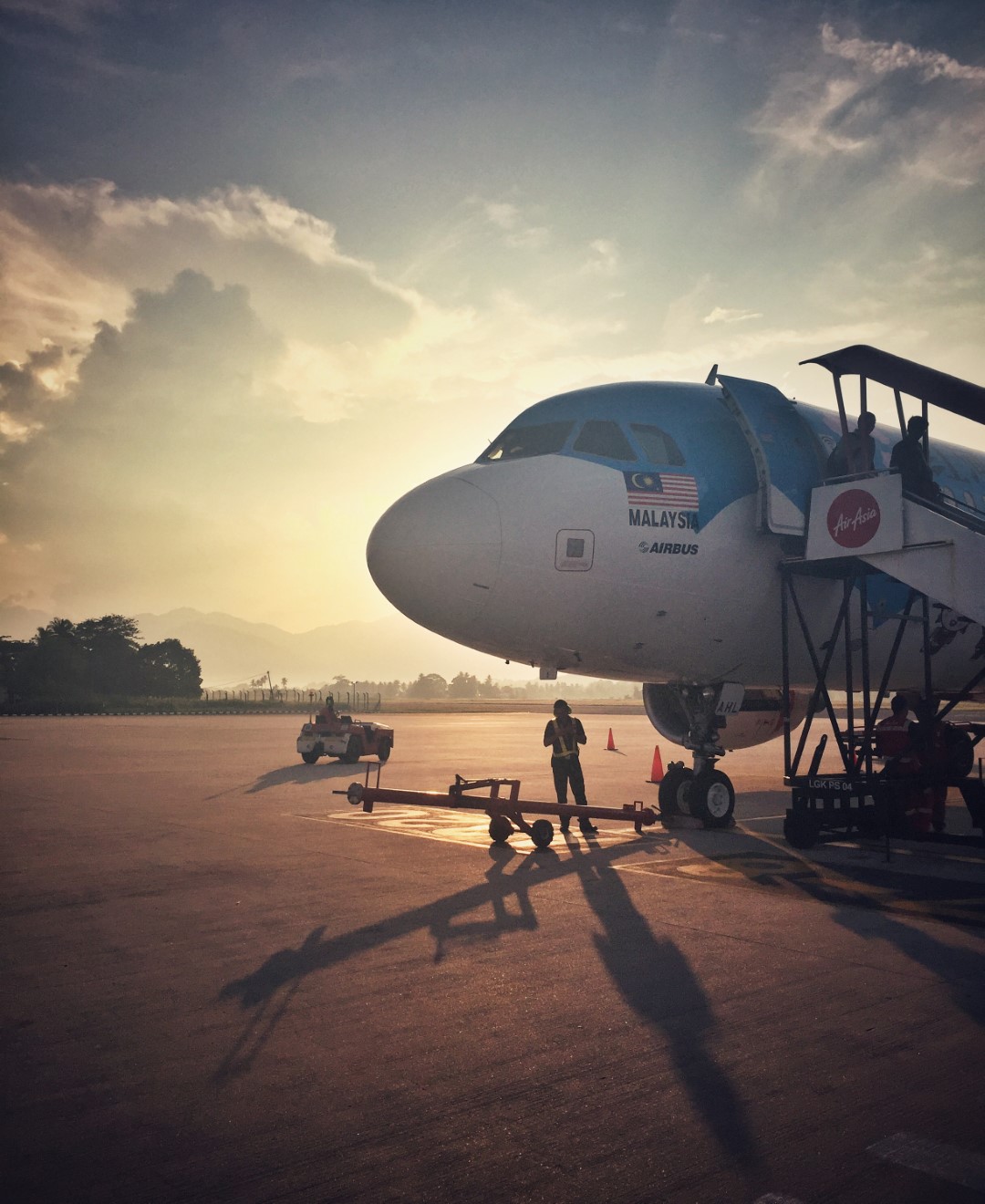panorama destination
panorama destination
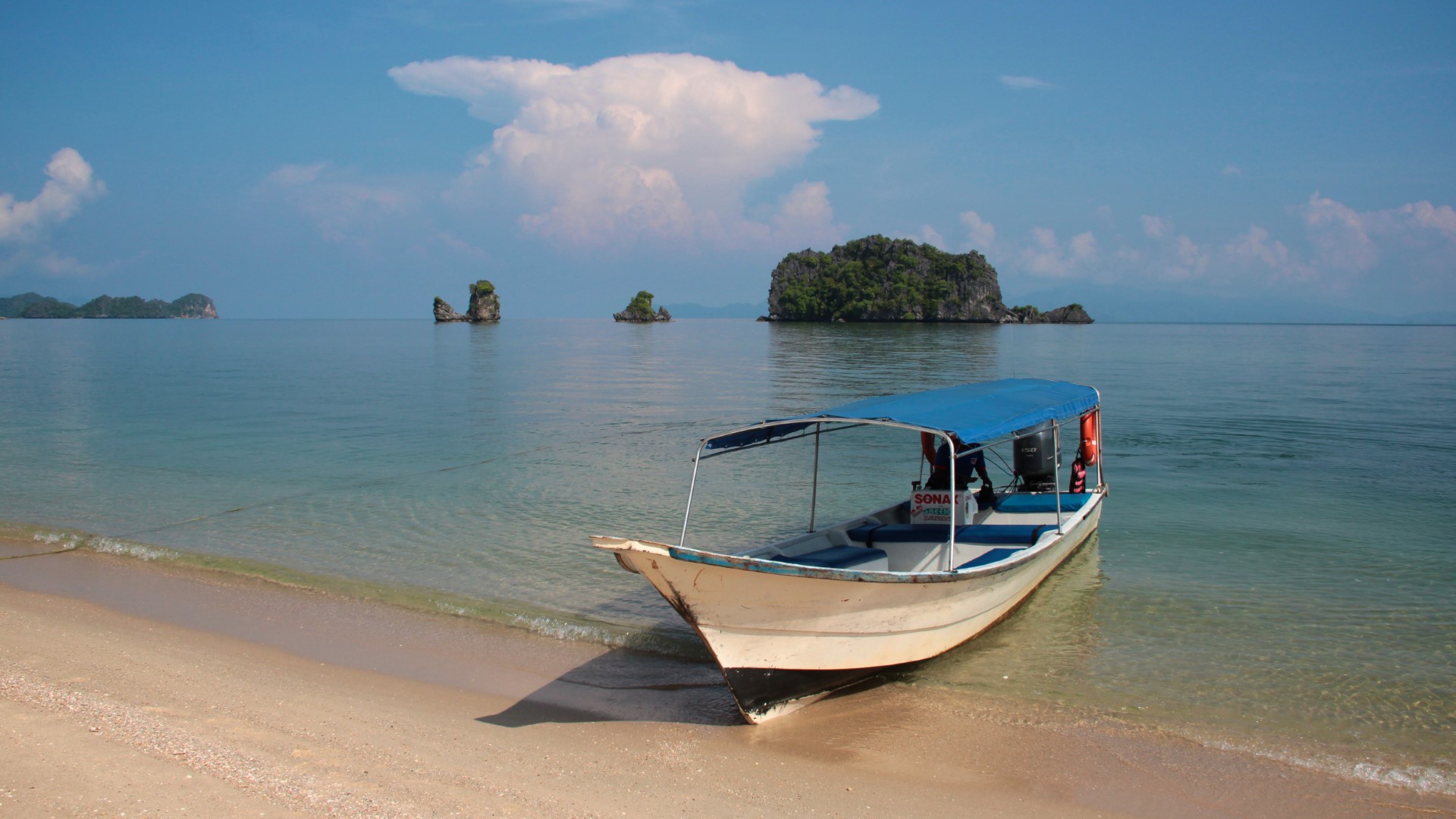
Located 30km (19 miles) off the coast of the Malaysian Peninsular, Langkawi is a cluster of 99 islands that freckles the ocean border with Thailand in the Andaman Sea. The name itself, which is also given to the largest and most populated island in the group, translates as ‘Brown Eagle’ and honours the population of raptors that nest in the cliffs of Langkawi’s karst formations and hunt fish in the lakes, rivers and mangrove swamps that crisscross the islands.
It was to these islands that I was headed, after an early morning arrival on the grassy airstrip that welcomes Langkawi’s visitors. With a buttery sun just beginning to spread itself over the forested hills that cling to the airport, the plane came to a stop on the already baking tarmac, casting long shadows in the tangerine light of a tropical morning. Nothing beats the feeling of arriving in an unfamiliar place at daybreak.
“a land of myths and legend”
Driving through the main island takes you on a journey through a land of myths and legend; a story of forbidden love, temper tantrums and a food fight. Langkawi’s major landmarks were supposedly formed in a tale of star-crossed lovers from warring families; their respective fathers, named Mat Chinchang and Mat Raya, were sworn enemies, pushed together in reconciliation by the love of their children. In what is possibly the first ever example of relatives behaving shamefully at a wedding, the two men lost their tempers, looked around for weapons and settled on the pots and pans of the wedding banquet. A pot of curry crashed into the site of what is now the village of Kampung Belanga Pecah, meaning ‘Broken Pot Village’; its contents spilled into the earth, creating the village of Kisap, meaning ‘seep in’; and then came to rest at Langkawi’s main town of Kuah, meaning ‘sauce’. Telaga Air Hangat - the island’s hot springs - were apparently created by a cauldron of boiling water that was sent flying in the bombardment of culinary ballistics.
In the ultimate hangover for these two remorseful drunken uncles, Chinching and Raya were turned to stone and became the two mountains that dominate the outline of the island to this day. Mat Sawar was a family friend caught in the crossfire, who continues to stand as peacemaker between the two great sulking peaks.
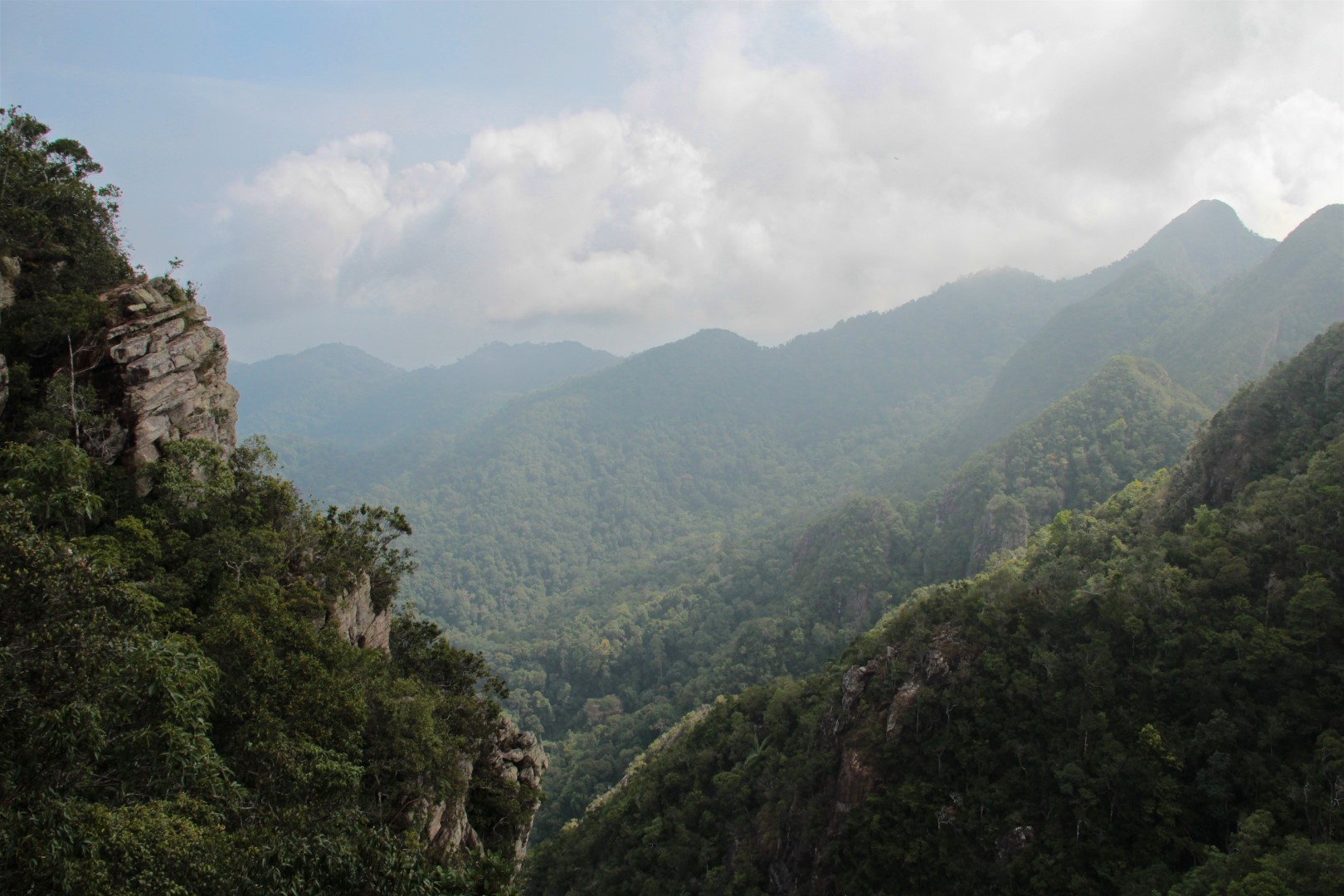
Kilim Karst Geoforest Park
Beyond the brooding mountains of the interior, Langkawi descends through groves of banana trees to a coastline of white sand and seashells. This stunning location, reminiscent of the karst lagoons in Thailand’s Krabi province or the famous Ha Long Bay in Vietnam, is the point of departure for the day’s mangrove river safari into the Kilim Karst Geoforest Park. Covering 100 km2 (38.6 sq miles) of river, mangroves and coastal forest, the park has been listed as one of UNESCO’s global network of geoparks since 2007. Its maze of swamps and waterways support an immense diversity of wildlife, from monitor lizards and snakes, to kingfishers, bats, short-tailed macaques and Langkawi’s eponymous eagles.
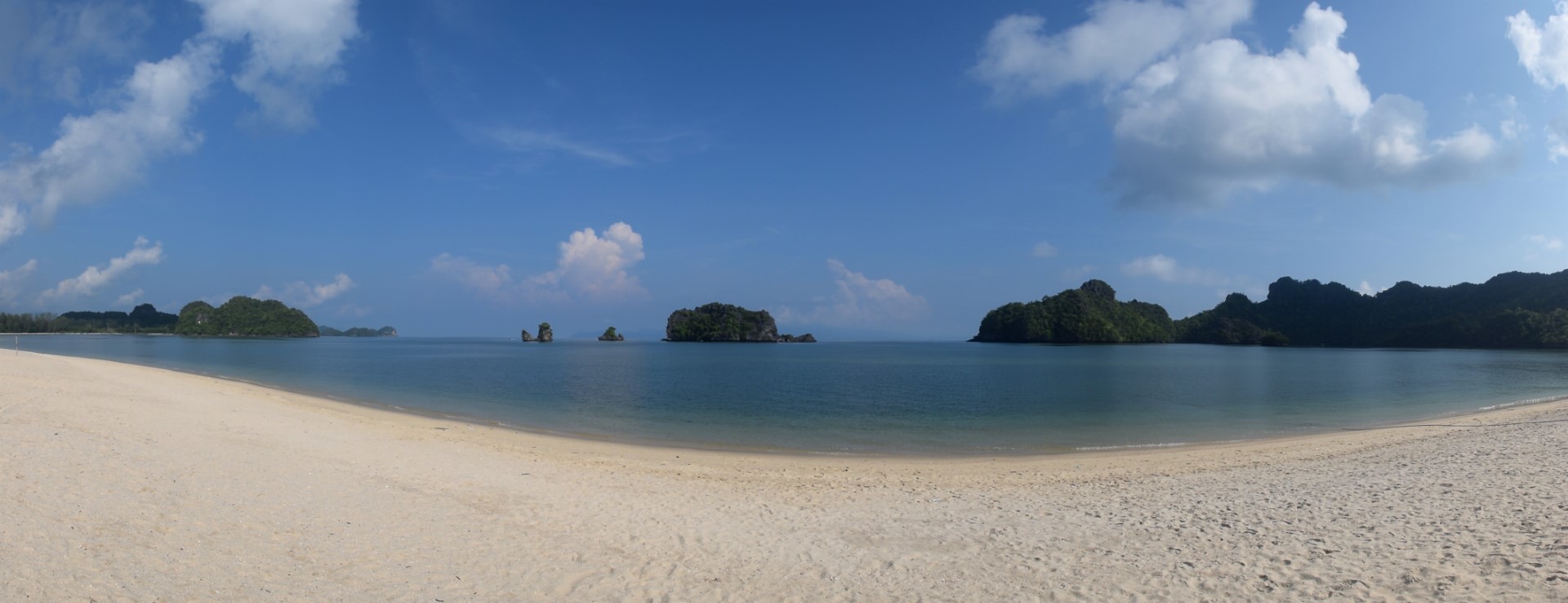
The river safari glides through Kilim’s rivers, pushing deeper into the park until the boat arrives at a floating fish farm. Here, local fishermen store their catch in a living larder that doubles as an aquarium for people passing through. Prehistoric horseshoe crabs scuttle across shallow baskets in the midday sun, next to a crosshatch of separate pools containing rays, a leopard shark and even a school of trevally, circling with menace in search of prey. When dinner is served, their tank turns to a churning cauldron of froth and flashing teeth, as the trevally demonstrate the muscle power that makes them such formidable hunters and Langkawi’s most popular quarry for sport fishing. Definitely NOT the time or place to lose your footing (the week before, a visitor had the bright idea of dangling a GoPro into the maelstrom; he promptly lost his camera and was lucky to keep his arm).
“From the tangle of foliage appears a pair of twinkling yellow eyes”
Setting off from the fish farm, we tunnel into a thicket of roots, vines and leathery leaves, all drooping from the rocks like gnarled clumps of dreadlocks into the water. From this tangle of foliage appears a pair of twinkling yellow eyes, shortly followed by another, then another. As we round a bend in the river, the mangroves briefly give way to a sand bank, where the eyes’ owners appear in the open; a troop of short-tailed macaques, about 20 members strong, including a muscular alpha male alongside mothers wrangling their wayward babies.
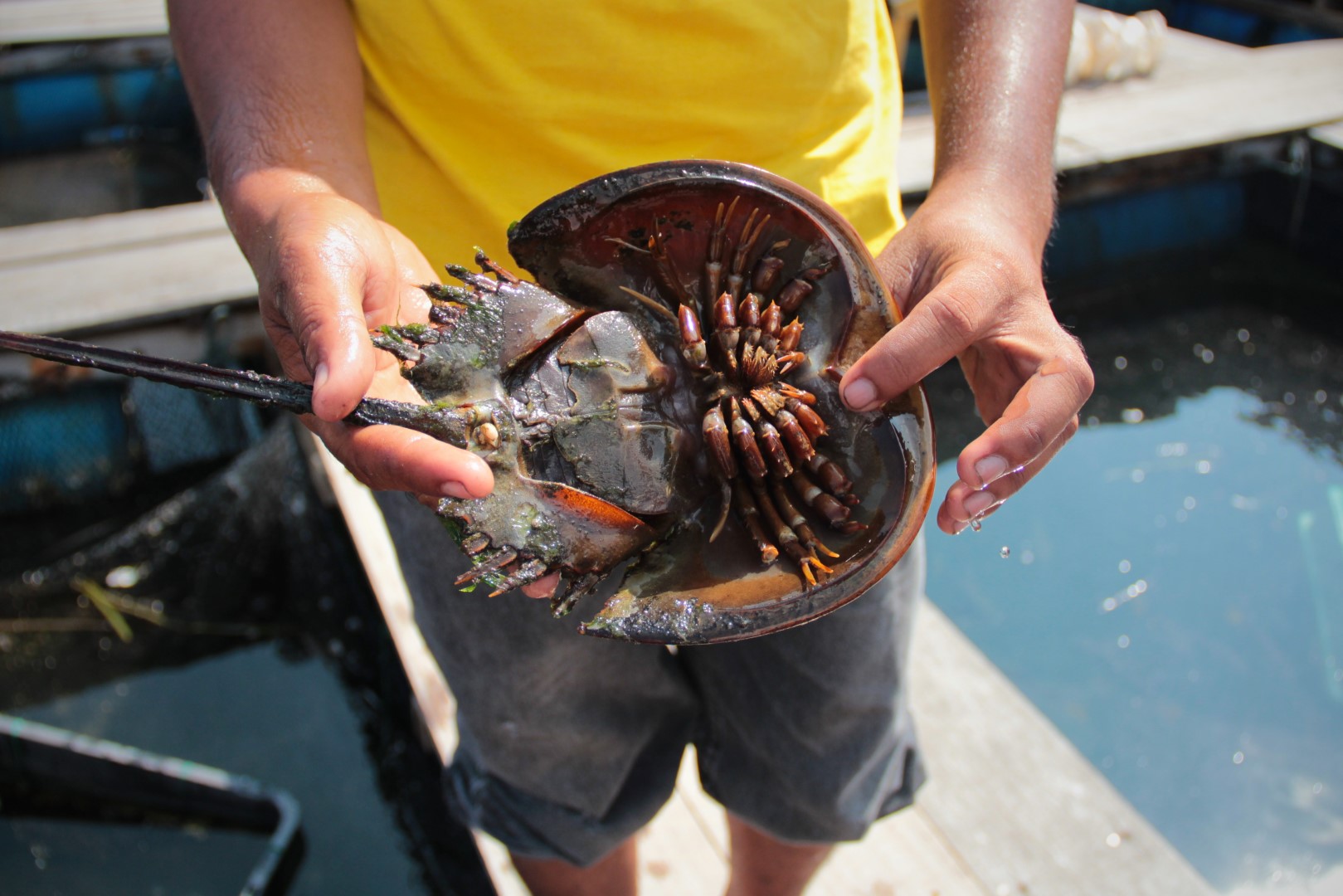
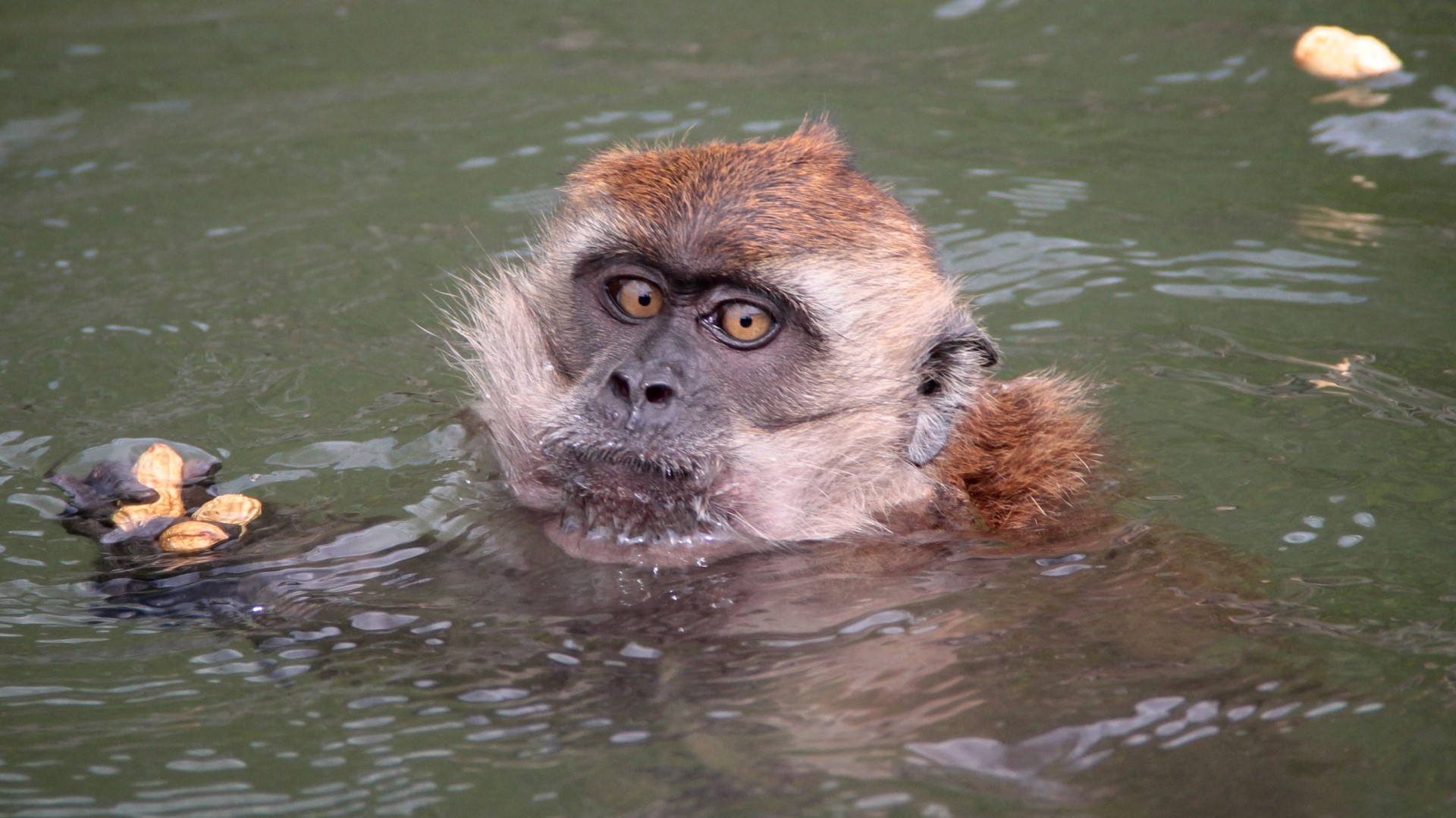
Like all residents of the Kilim Geopark, these monkeys have adapted perfectly to suit their flooded surroundings; they dive and swim in search of food, leaping from branches into the water to retrieve fruits, seeds and nuts that float by on the tide. Several of the more fearless swimmers paddled right up to the boat in the hope that someone would drop a morsel over the side. The safari continues to unveil a wide variety of characters that make the park their home; brightly coloured kingfishers, fruit bats, monitor lizards and pythons all make an appearance, along with a dramatic view of the park’s two eagle species fishing on a lake.
“We huddle together in a cave during a passing rainstorm”
Our guides seem to have eagle eyes themselves, spotting wild animals on the banks and in the branches of trees that the rest of us couldn’t even see until we were within touching distance. Knowledgeable, passionate and skilful, they negotiate the tricky waterways of the park whilst pointing out its otherwise illusive and retiring inhabitants. Our guide explains the inverted growth system employed by the forest by picking seeds and roots from the river, then describes the ways in which the environment changes with the tides as we huddle together in a cave during a passing rainstorm. In another cave we gratefully learn that the local population of bats is responsible for eliminating several million mosquitos from the local airspace every night, whilst also watching evolution in action in some lungfish that crawl up into the muddy shallows. Through it all, we got to learn a great deal about Langkawi and share in the sense of wonder that local people have at the Jungle Book wonderland that exists on their doorstep.
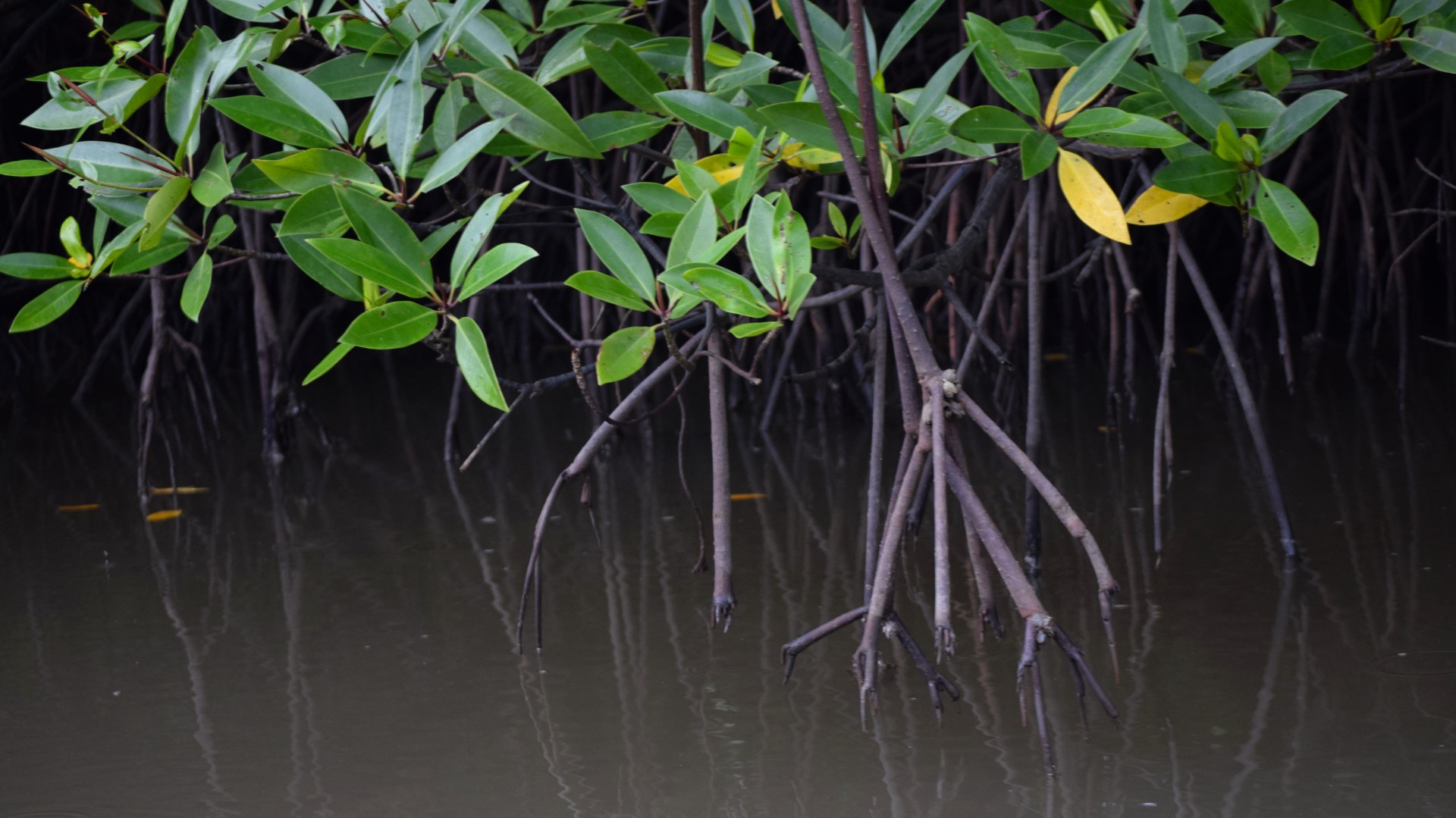
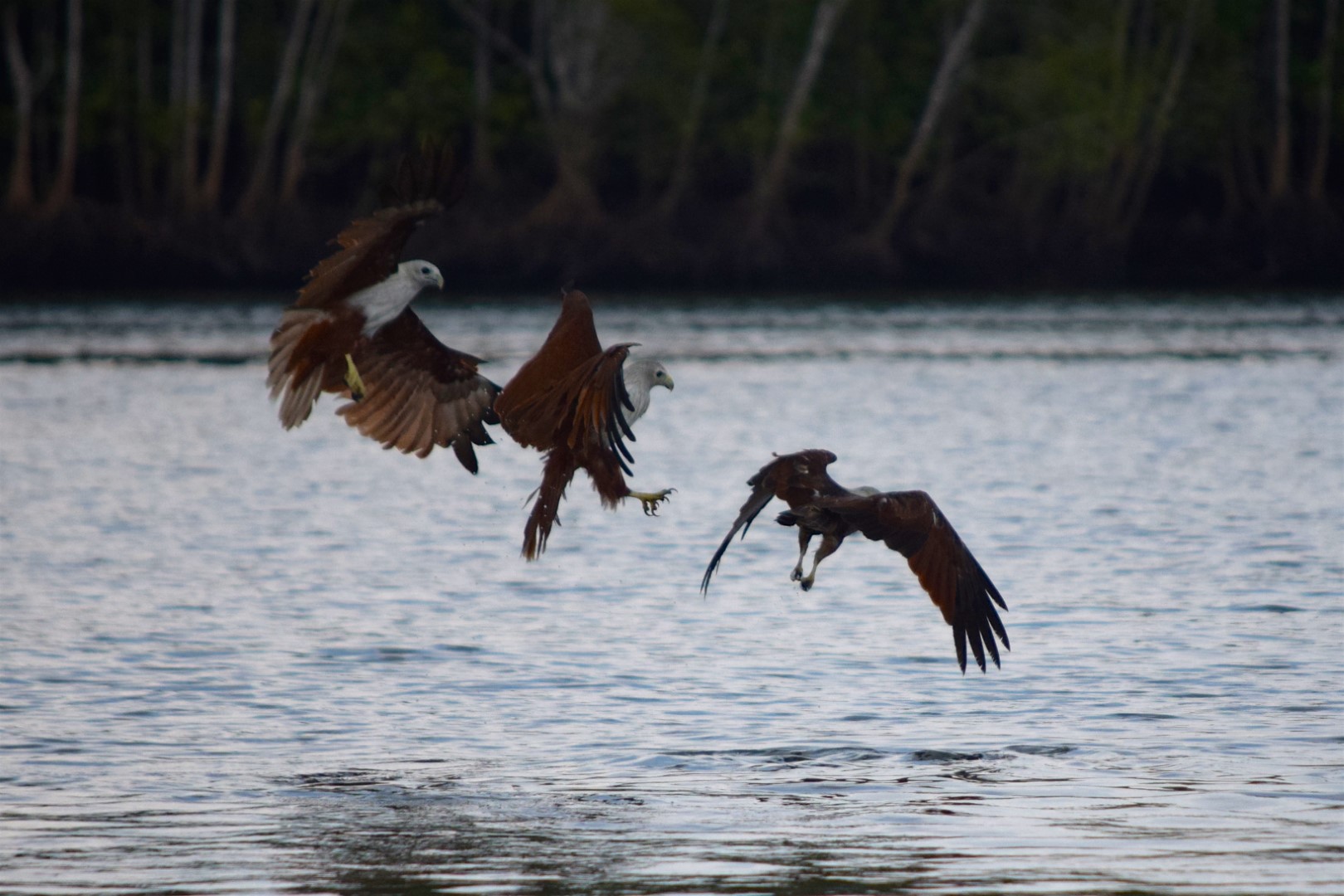
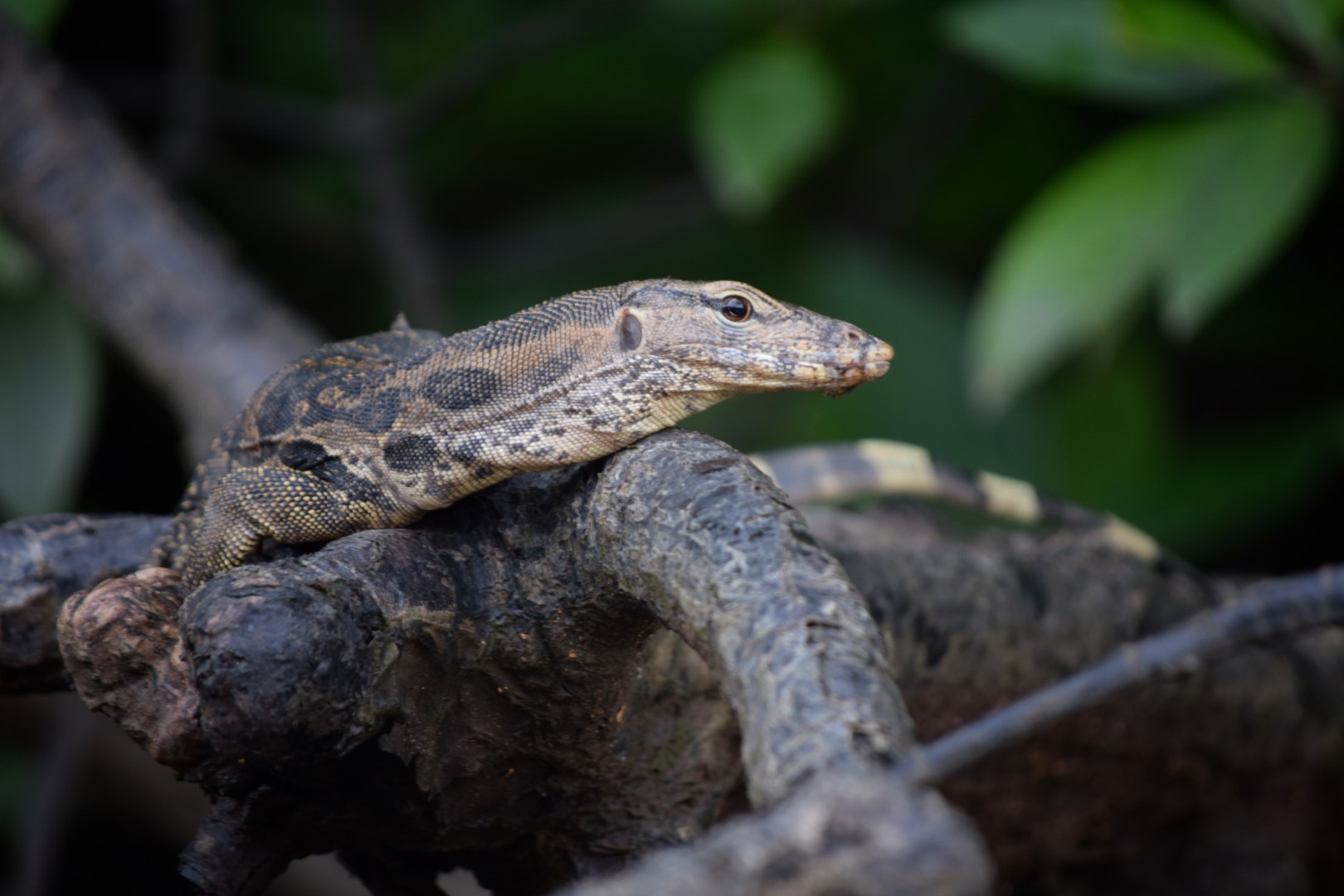
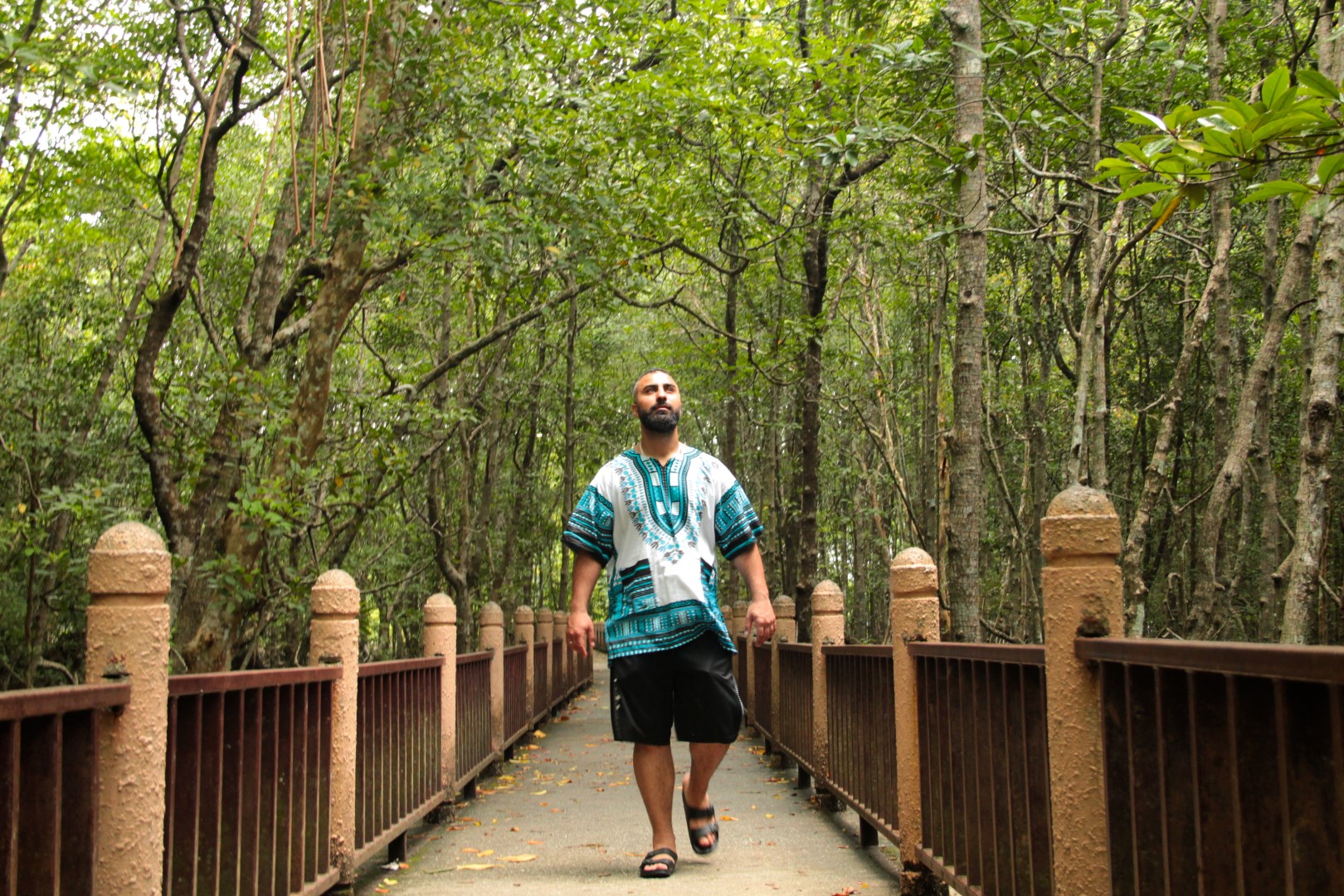
Langkawi Cable Car
The door slides shut. Gears whir and crunch into life overhead. Locked inside a bubble of steel and Perspex, any notions of solidity and shelter soon evaporate as the cable car lurches forward, swinging for a moment like a Christmas bauble as it passes through the knuckle joint of a pylon up above. The swing brings a gut-sucking view into the window frame: a vertical drop down to a stubble of tiny trees like matchsticks below.
“an epic, sweeping walkway over a canyon that hangs 100 metres above the ground”
Departing from the oriental village at Teluk Burau, the Langkawi cable car climbs 2.2 km (1.4 miles) over forested slopes, through the clouds and up to the summit of the Machinchang Mountain. Far below, the Telaga Harbour slowly recedes until the enormous cruise ships and freighters in the bay begin to look like toy boats in a paddling pool.
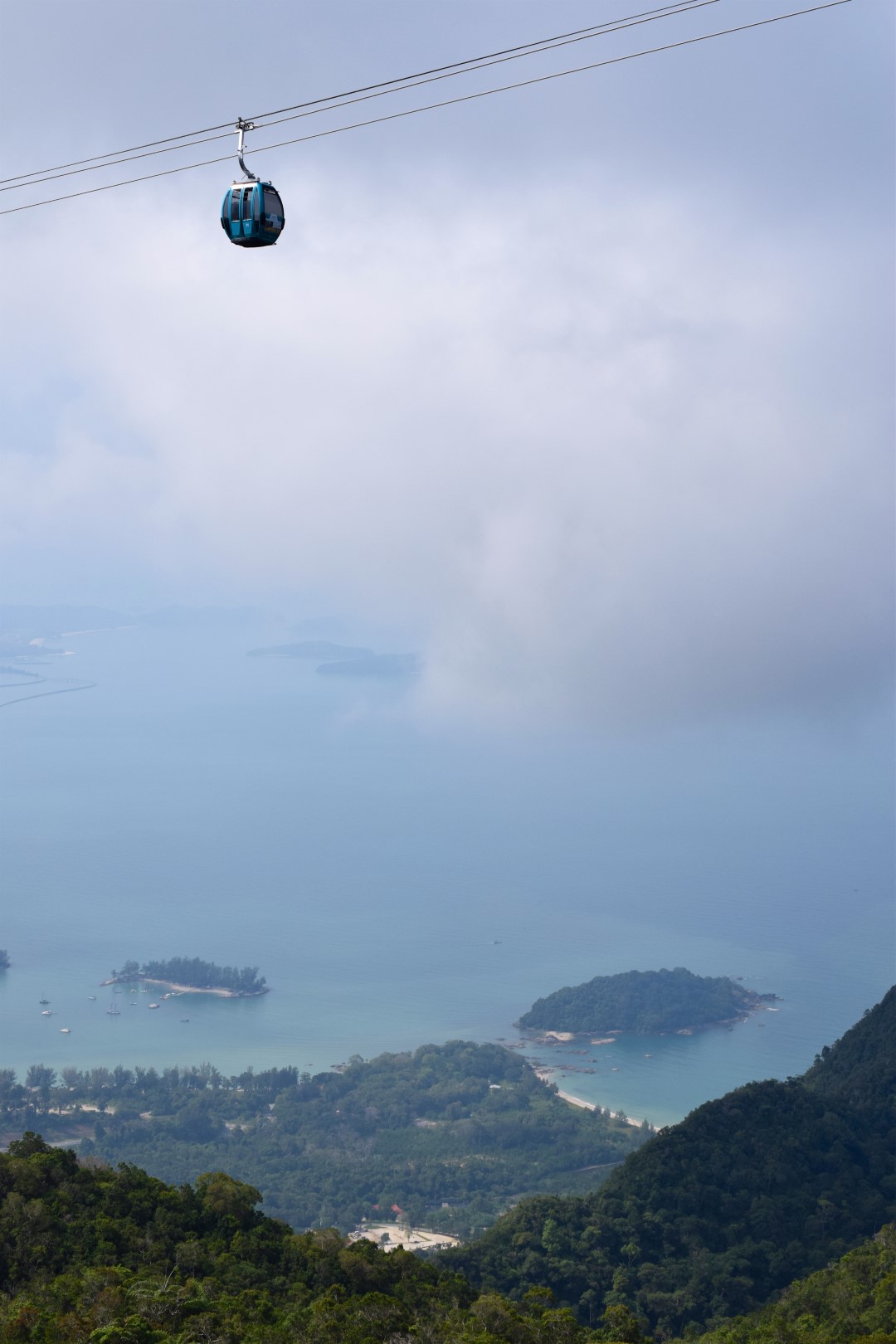
At the end of this rickety ride up into the heavens, a viewing platform stretches out on the mountaintop, tangled in a web of walkways and paths decorated in colourful padlocks, each with an inscription dedicated to special someones from around the world. A pathway leads through the jungle on the mountainside, then emerges at the Skybridge; an epic, sweeping walkway over a canyon that hangs 100 metres above the ground and is supported by a single tower, making it the longest free span and curved bridge in the world. The cloud cover burns away in the early morning sun, just as I reach the middle of the bridge. The sudden clarity reveals an almighty drop to the jungle below. The hand rail suddenly becomes my own personal lovelock. Jelly legs and butterflies are never far away in Langkawi.
With its combination of dizzying heights, awe-inspiring scenery and abundant wildlife, Langkawi is an island that sweeps you up and carries you to new heights. This unassuming little patch of karst mountains, mangroves and beaches in the Andaman Sea is a clean and picturesque playground for travellers with a love of nature and a taste for adventure.
After Langkawi, Panorama Destination journeyed to Penang. Click here to Travel With Us.
